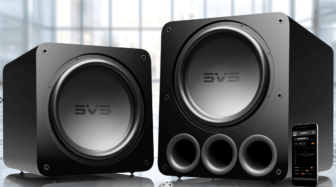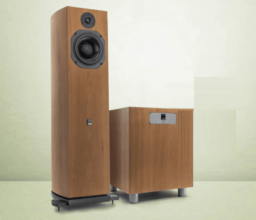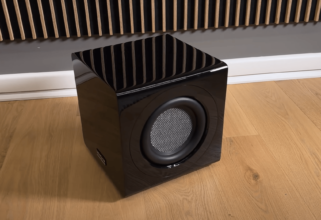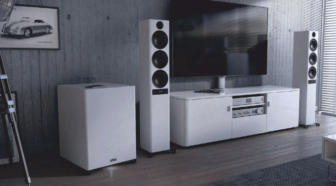Velodyne Deep Waves 10 Review
True to the motto “Shoemaker, stick to your last,” the company Velodyne builds exclusively subwoofers. There are eight model series; prices start at $954. We have listened to the exciting Deep Waves 10.
Alexander Rose-Fehling
Test & Technology Active Subwoofer
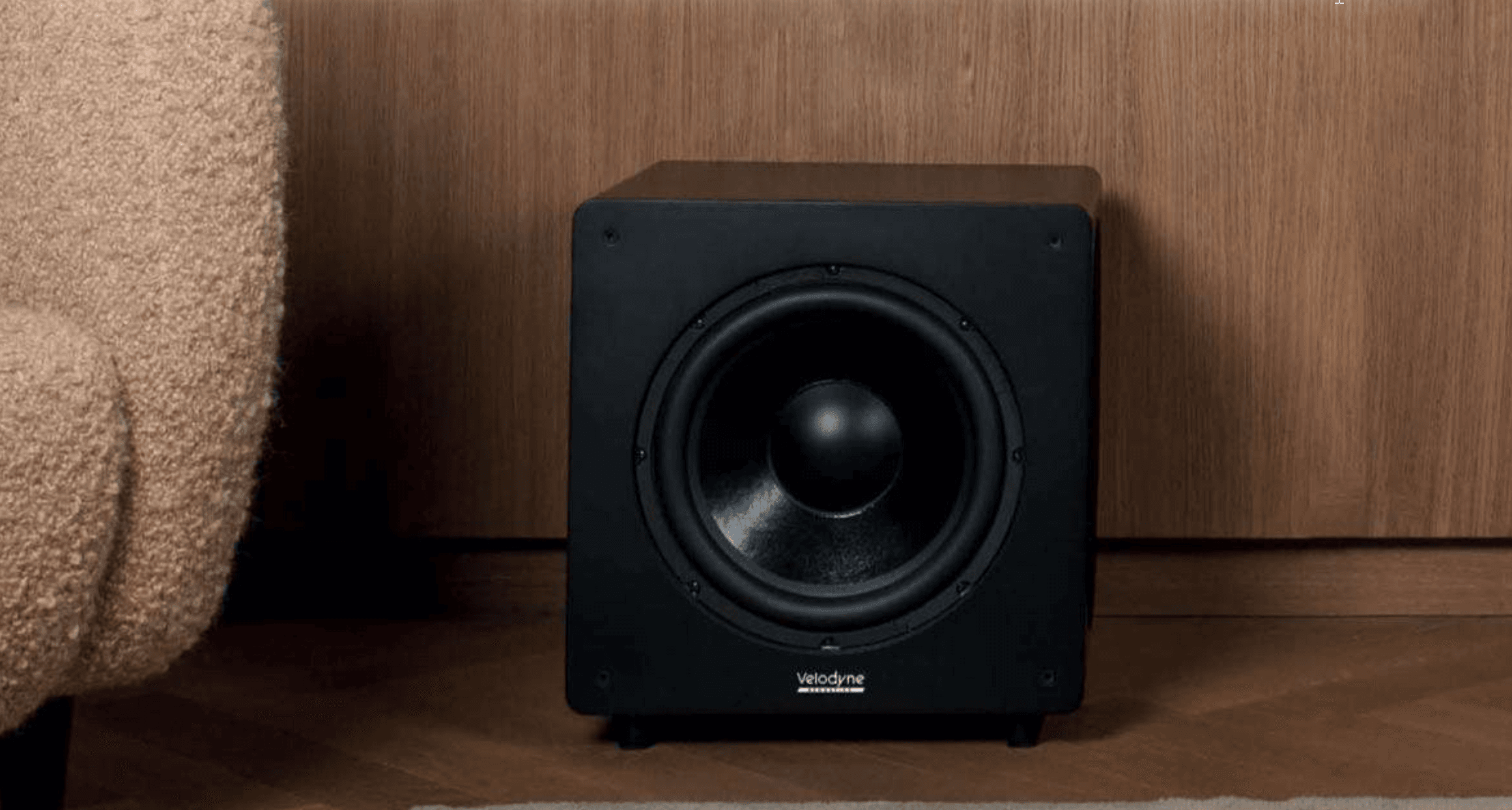
While the Nubert XW-1200 has one driver and the Inklang Ayers Sub has two drivers, the Velodyne Deep Waves 10 offers three of them. The active 10-inch driver, powered by the amplifier, radiates forward. On both sides, passive radiators are placed, which convert the air emitted by the front driver inside the cabinet into sound. For this purpose, they are tuned to the frequency at which they resonate. This is costly, even though the passive membranes have no drive, i.e., no voice coil and no magnet. The drivers are housed in a matte black lacquered MDF cabinet with 22 mm wall thickness. The subwoofer weighs a pleasant 21 kilograms. A power amplifier provides the necessary power, offering 350 watts.
Special Features
Unique among the test field, the Deep Waves 10 has speaker-level inputs and outputs. So, as in the past with passive subwoofers, you can pass the complete signal through this way. However, most users will probably connect to the amplifier or preamp using RCA cables. We must especially highlight the incredibly richly equipped iWoofer app. There is so much to adjust here—for example, you can regulate the high-pass and low-pass slopes separately, which we recommend (see measurement box) to get the maximum out of the Deep Waves. Like the Nubert subwoofer, there is also a Wi-Connect transmitter for the Velodyne (around $318). With the transmitter, the music signal can be sent wirelessly to the subwoofer, which we only recommend if laying a cable would really be too complicated.
Like the others, the Deep Waves could be perfectly paired with the bookshelf speakers. Inconspicuously and cleanly, it took over the bass. Sound differences between the three candidates were basically not noticeable. Level stability and depth are good; the Deep Waves 10 is recommended more for small rooms and moderate volumes than for larger home theaters, which seems logical considering the 10-inch driver.
CONCLUSION: The Velodyne Deep Waves 10 is exemplary in terms of features and especially the app. It is the candidate for difficult rooms. Moreover, it looks good and justifies its price not least through the active/passive driver solution.
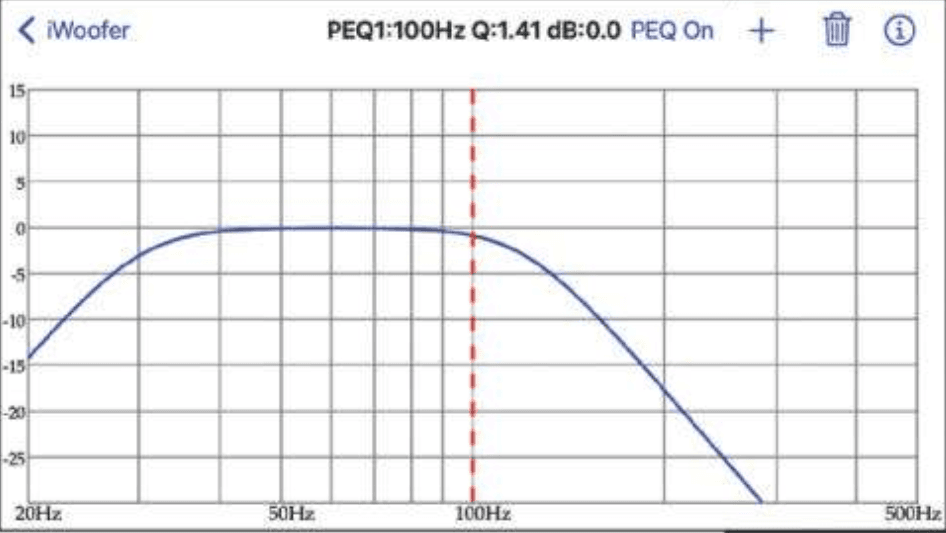
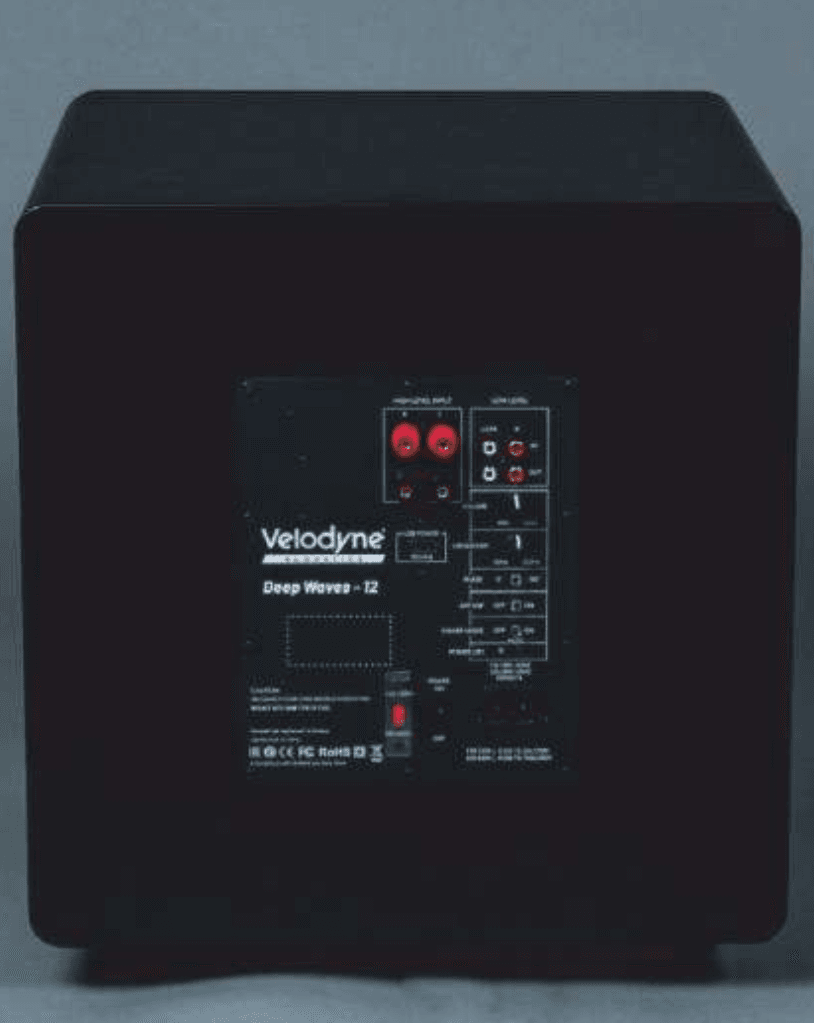
Specs
- Website: velodyneacoustics.com
- List Price: €1700 (approx. $1830)
- Warranty: 2 years
- Dimensions (W × H × D): 38 × 40 × 32 cm
- Weight: 21 kg
- Finish: Veneer / Foil / Lacquer: No / No / Yes
- Color: Black
- Design Principle: Front-firing (active) & side-firing (passive)
Features
- Auto Standby: Yes
- Phase Inversion/Adjustment: No / Yes
- Remote Control: No
- Room Adjustment: Yes
- Input Cinch/XLR/Speaker: Yes / No / Yes
- Output Cinch/XLR/Speaker: No / No / Yes
- High-Pass Filter: Yes
- Special Features: Extensive settings available via app
Pros & Cons
✅ Pros:
✔ Clean sound
✔ Extensive settings available in the app
✔ Practical input sensitivity
❌ Cons:
✘ Settings can be somewhat complex
✘ Measurement values are not optimal
Ratings (Converted to a 10-Point Scale)
| Category | Original Score | 10-Point Scale |
|---|---|---|
| Sound Quality (Cinch/XLR) | 178 | 10.0 |
| Features | Outstanding | 10.0 |
| Usability | Very Good | 9.0 |
| Build Quality | Very Good | 9.0 |
Audio Benchmark
- Overall Rating: 178 Points (≈ 9.8/10)
- Price/Performance: Very Good
Velodyne Deep Waves 10
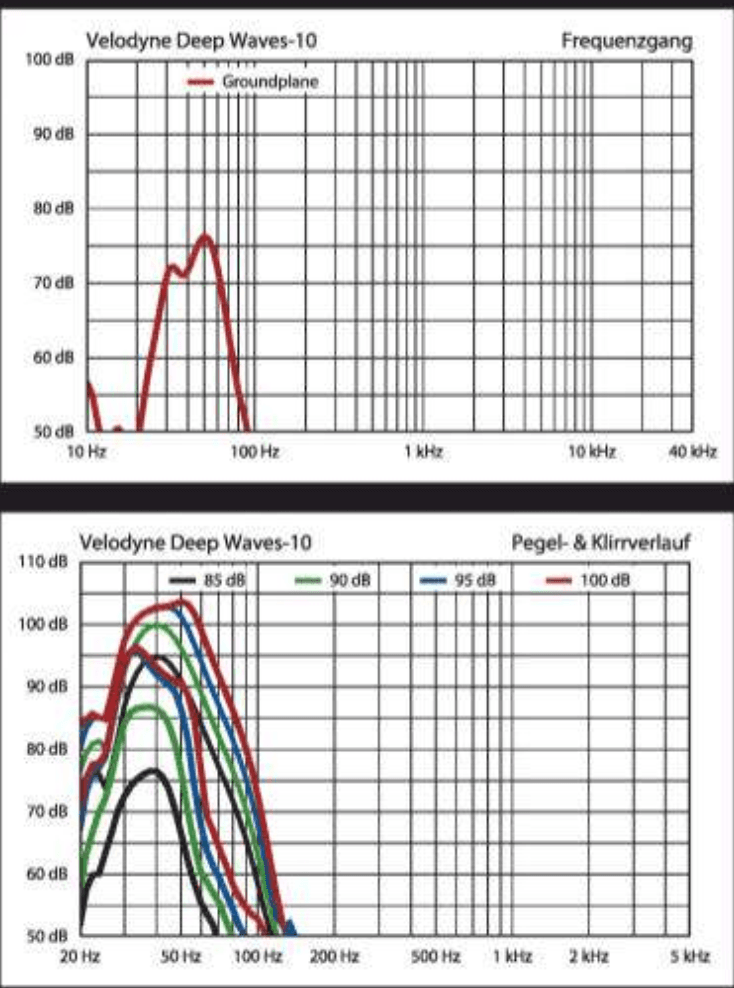
Front- and side-firing subwoofer with dual passive membranes. Frequency response: 50 Hz peak, low-pass filter cuts off earlier than specified. Transmission range at minimum, medium, and maximum low-pass: 24–44/28–65/26–67 Hz. Distortion: early onset of distortions (mainly second harmonic), compression at 100 dB SPL. Low maximum level when the variable high-pass is not used; maximum level at minimum, medium, and maximum crossover settings: 86/88/94 dB SPL. With high-pass filter at 60 Hz and fully turned-up low-pass, there is a transmission range of 35–75 Hz with a maximum level of 102 dB SPL. Power consumption in operation (idle): 9 W. Amplifier power according to manufacturer: 350/600 W (RMS/Peak).



